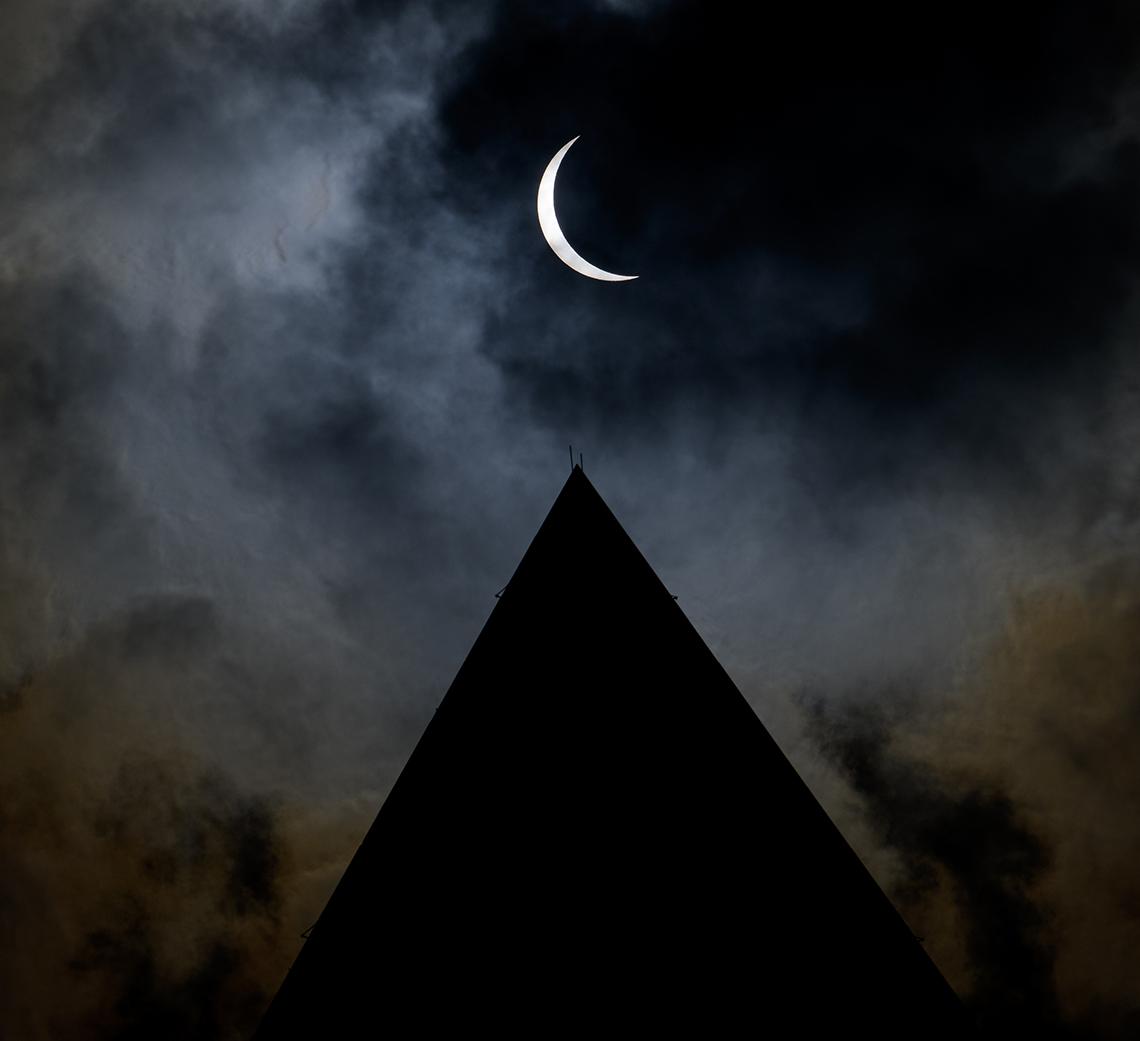NIH’ers Gather to Watch Solar Eclipse

Photo: BILL INGALLS/NASA
Hundreds of employees and visitors on NIH’s Bethesda campus tilted their heads skyward to watch the solar eclipse.
On Apr. 8, a total solar eclipse swept across North America, passing over Mexico, 15 states and Canada. Despite being hundreds of miles from the path of totality, NIH’ers still saw the moon partially block out the sun.
In the Washington, D.C. area, the moon began to cross the sun at 2:04 p.m. By 3:20 p.m., the moon obscured 87% of the sun at maximum eclipse. For the next 4 minutes and 28 seconds, the moon partially covered the sun. At 4:32 p.m., it ended.
The eclipse was the first since 2017 (https://go.nih.gov/9pncXbI). The next total solar eclipse that may be seen in the contiguous United States will occur on Aug. 23, 2044, and be visible in Montana, North Dakota and South Dakota.








